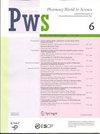CLINICAL APPLICATION OF THE SECOND GENERATION OF AMPLATZER PATENT DUCTUS ARTERIOSUS OCCLUDER IN THE INTERVENTIONAL CLOSURE OF CONGENITAL HEART DISEASE AND CASE SERIES
引用次数: 0
Abstract
Background: Some patients with structural heart disease are typically treated or improved by minimally invasive surgeries. Aim: To summarize the efficacy and experience in the treatment of congenital heart disease (CHD) using the second generation of Amplatzer patent ductus arteriosus (ADO- II) occluder. Methods: A total of 37 patients who were admitted to the cardiac surgery department of our hospital from June 2014 to April 2019 were included. After preoperative echocardiography and clinical screening, intraoperative transthoracic echocardiography, and cardiovascular angiography, postoperative echocardiography was carried out to evaluate the incidence of residual shunt and the location and morphology of the ADO-II occluder, as well as postoperative complications. Results: All patients were successfully treated using the ADO-II occluder. There were 27 (73%) cases with patent ductus arteriosus (PDA), as well as 5 (13.5%) cases with ventricular septal defect (VSD), 1 case (2.7%) with VSD combined with PDA, 1 case (2.7%) with aortopulmonary collateral arteries combined with PDA, 1 case (2.7%) with right coronary artery-right atrial fistula, and 2 (5.4%) cases were recanalized after ligation of the main pulmonary artery. All patients had no obvious abnormality in ECG reexamination one month after surgery; The x-ray showed no displacement and shedding, and no long-term significant residual shunt was found in transthoracic echocardiography. No death was reported. Conclusions: The ADO-II occluder is relatively simple to operate, with a high success rate and few complications, and it can be applied to not only PDA occlusion but also to other CHDs, making it worthy of further clinical promotion under the premise of grasping the indicators of interventional therapy.第二代amplatzer动脉导管未闭封堵器在先天性心脏病介入治疗中的临床应用及病例分析
背景:一些结构性心脏病患者通常通过微创手术治疗或改善。目的:总结第二代Amplatzer动脉导管未闭(ADO- II)闭塞器治疗先天性心脏病(CHD)的疗效和经验。方法:选取2014年6月至2019年4月我院心脏外科收治的患者37例。术前超声心动图、临床筛查、术中经胸超声心动图、心血管造影、术后超声心动图评估残留分流的发生率、ADO-II闭塞器的位置、形态及术后并发症。结果:所有患者均成功使用ADO-II型咬合器。动脉导管未闭(PDA) 27例(73%),室间隔缺损(VSD) 5例(13.5%),室间隔缺损合并PDA 1例(2.7%),肺动脉副支合并PDA 1例(2.7%),右冠状动脉-右房瘘1例(2.7%),肺动脉主干结扎后再通2例(5.4%)。术后1个月复查心电图无明显异常;x线未见移位和脱落,经胸超声心动图未见长期明显残余分流。没有死亡报告。结论:ADO-II型闭塞器操作相对简单,成功率高,并发症少,不仅可应用于PDA闭塞,还可应用于其他冠心病,在掌握介入治疗指标的前提下,值得进一步临床推广。
本文章由计算机程序翻译,如有差异,请以英文原文为准。
求助全文
约1分钟内获得全文
求助全文

 求助内容:
求助内容: 应助结果提醒方式:
应助结果提醒方式:


